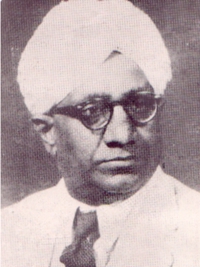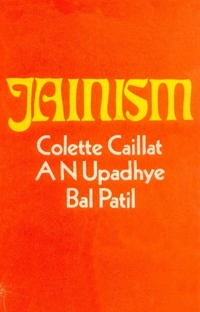The sixth century B.C. was a glorious millennium in the history of the ancient Indian civilization. It marks a period of great religious rejuvenation and of the emergence of heterodox religious revolt as represented by Jainism and Buddhism- the arch contenders with the declining hegemony of Vedic Brahmanism.
But it would be a mistake to assume from this that Jainism originated in the sixth century B.C. That the genesis of the Jain religion can be traced to deepest antiquity in recorded history is now clearly acknowledged by eminent scholars. This is borne out by allusions to Jain Sramanas in ancient Vedic literature. The Sramanas are referred to in Rigveda, in Taitiriya-aranyaka and in Bhagvata Purana, and also the term Muni is found in Vedic literature. This is substantiated by the fact that monks are called arhans or arahatas in the Rigveda and Atharvahaveda, a term, which is applied in Jaina tradition to denote great-emancipated souls.
The non-Aryan origins of Jain culture are confirmed by H.T. Colebrooke in his Observations on the Sect of Jains confirms the non-Aryan origins of Jain culture. He observes that the Greek authors of the third century B.C. divided all philosophers into two groups- samana (Sramanas) and Brahmans so greatly differentiated as they considered them belonging to different races. Mrs. N.R.Guseva of the Academy of Sciences. USSR who has written an ethnological study of Jainism emphatically concludes from this:
“Only one interpretation can be given to this and that is, in those times followers of Jainism were, in the main, representatives of pre-Aryan population of the country. This means that there is a basis to assert that the chief components of this non-Vedic religion were engendered by non-Aryan ethnical environment”. (p.24, Jainism).
Not only was Jainism historically antecedent to the Vedic culture and truly indigenous to the soil of India but also it was also spiritually and materially superior to the Aryans. The principle of Ahimsa (non-violence) and the prescription of strict vegetarianism are the prime and unique characteristics of Jain religion and ethics. They could not have developed in Aryan culture. To the immigrant Aryans vegetarianism as a way of life could not be natural owing to the climatic conditions of the countries they came from and there is ample Vedic evidence to show that meat eating was not a taboo among them. But abstention from meat came naturally to the native inhabitants of India because of the climate.
That the concept of Ahimsa was foreign to Vedic culture is shown by the eminent ideologist Professor W.Norman Brown in his book Man in the Universe (Tagore Memorial Lectures, 1964-65). His observation deserves to be quoted in full.
“Though the Upanishads contain the first literary references to the idea of rebirth and to the notion that one’s action (karma) determines the conditions of one’s future existences, and though they arrive at the point of recognizing that rebirth may occur not only in animal form but also in animal bodies, they tell us nothing about the precept of ahimsa. Yet that precept is later associated with the belief that a soul in its wandering may inhabit both kinds of forms. Ancient literature is conspicuously silent about ahimsa. The early Vedic texts do not even record the noun Ahimsa (non-injury) nor know the ethical meaning which the noun later designated. The first occurrence of the word in Sanskrit literature is in the Upanishads, but there it occurs only once (CU 3.17.4) and in a context that has nothing to do with transmigration. It is merely mentioned inconspicuously in a list of five virtues, and without any indication of its character. These virtues are austerity (tapas) almsgiving (dana) rectitude (arjava), ahimsa (non-injury) and truthfulness (satya vacana). It is evident that these are prized virtues or virtuous practices, but nothing is said about them. All of them except ahimsa are mentioned elsewhere in the Upanishads, some of them frequently, but ahimsa stands here isolated and unexplained. Nor an explanation of ahimsa deducible from other parts of Vedic literature. The ethical concept, which it embodies, was entirely foreign to the thinking of the early Vedic Aryans, who recognized no kinship between human and animal creation, but rather ate meat and offered animals in the sacrifice to the gods.” (pp 53-54).
Therefore, Professor Brown concludes:
“The double doctrine of ahimsa and vegetarianism has never had full and unchallenged acceptance and practice among Hindus, and should not be considered to have arisen in Brahmanical circles. It seems more probable that it originated in a non-Brahman environment, was promoted in historic India by the Jains and the Buddhists, and was adopted by Brahmanic Hinduism after it began to win its way in North India where Brahmanic Hinduism developed.” (P.56).
It is also interesting to note in this context that there is a vital connection between the concept of ahimsa and the concept of rebirth. A belief in the doctrine of rebirth led to the idea of the unity of all life and, consequently to the ethical concept of non-violence in ancient India. Once the doctrine of migration of souls came to include rebirth on earth in animal as well as human form depending upon one’s karma it created a humanitarian sentiment of kinship among all life.
To have developed this ethical principle is therefore a great pioneering step in human history. Dr. Albert Schweitzer handsomely recognizes the great contribution of the Jain culture to this evolution in human ethic when he says:
“The laying down of the commandment not to kill and not to damage is one of the greatest events in the spiritual history of mankind. Starting from its principle, founded on world and life denial of abstention from action, ancient Indian thought and this is a period when in other respects ethics have not progressed vary far reaches the tremendous discovery that ethics know no bounds. So far as we know, this is for the first time clearly expressed by Jainism.”
The uniqueness of this ethical contribution is also recognized by Dr. Walther Schubring when he says in his celebrated classic The Doctrine of the Jainas that: ‘The “reverence towards life” (as Albert Schweitzer put it) by which he realm of life was so immeasurably extended, permeates the discipline of Mahavira’s Order in a way no other ethical prescription does.” (P.301)
From the foregoing analysis it is also noteworthy that the main pillars of the Indian metaphysical thought constituted by the concepts of rebirth, karma and salvation through a way of life governed by non-violence are the characteristic contributions of Jain faith because logically and spiritually they are intimately interlinked. In this context one can appreciate the conclusion arrived at by Hermann Jacobi when comparing Jainism with Buddhism and Brahmanism. Jacobi observed in Jaina Sutras, Part I, Introduction, that there are four elements common to all three religions and these are according to him: (1) faith in rebirth of spirit, (2) karma theory, (3) salvation from rebirths, and (4) belief in periodic manifestations of prophets to resurrect religious spirit on earth.
Jacobi concedes that the first three are a logical outcome of a faith in non-violence and hence they could not arise in the Aryan culture consistent with its sacrificial cult and that is why they are apparently borrowed from non-Aryan faiths, that is, Jainism.
It was this priceless legacy of non-violent culture nurtured by ages of spiritual cultivation which Mahavira Vardhamana the twenty fourth Tirthamkar was destined to inherit and propagate for the enduring benefit of humanity. Mahavira was the ascetic leader of the renascent Jainism. As the propagator of the principle of ahimsa paramo dharma- non-violence is the greatest religion Mahavira preached fervently against, the decadent ritualistic practices of Brahmanism culminating in the supposition that propitiation of heavenly deities like Indra and Varuna through sacrificial fires was the highest religion. Mahavira pointed out to his followers that such slaughter of animals was the vary travesty of religious principles. He stressed that all life is sacred and equal.
Mahavira’s protest against violence to animals in the name of religion was a magnificently humane gesture and it reawakened the people to the innate dignity of all life under the sun howsoever small and mean in the eyes of man. To have discovered unity of life in all organic phenomena and to have stressed the right to live peacefully of all creatures was the greatest triumph of Mahavira. He based his teaching on the most obvious principle that ‘all creatures like to live, non wants to die, and therefore all life should be protected.’ (Acharanga sutra)
It was natural that after stressing the supremacy of non-violence in human activity Mahavira should gave simultaneously emphasized the cardinal importance of self-control. Non-violence did not mean merely abstention from physical violence: it was abstention from violence in thought and word as well. Therefore, he rightly stressed that to control the self is the hardest thing to achieve.
Mahavira’s own life was perfectly symbolic of his teaching. He did not teach anything that he did not practise himself. He was a scion of the princely family of Licchavi, a principality in the ancient Magadha. But he could not remain long enmeshed in the cloistered pleasures of the palace. Mahavira’s compassionate heart bled to see the cruel treatment meted out to animals and lower classes like Sudras. In his time the Brahmanic religion ordained that Sudras and women were not entitled to Vedic knowledge. If a Sudra committed the sin of reciting the Vedic mantras his tongue would be cut, and if he happened to hear the recitation of mantras molten lead would be poured into his ears.
Thus the sagacious Varanashrama systems had congealed into unmitigated casteism. It was a far cry indeed, from the noble and universal principles enunciated in the ancient scriptures. Mahavira instinctively felt it to be his mission to life this curtain
Of appalling ignorance which made to hate man and to reawaken in him a sense of innate quality of all human beings.
Mahavira declared that deeds and not birth make man what he is. In a trenchant saying in Uttaradhyayana Sutra Mahavira pinpoints this:
“Nobody becomes a Sramana by shaving his head, nor does a man becomes Brahmana by reciting Om. One is not called Muni by residence in the forest or become an ascetic by wearing grass-clothes. One becomes a Sramana by a sense of equality, a Brahmin by chastity, a Muni by knowledge and an ascetic by penance. Man becomes a Brahmin, Ksatriya, Vaisya or Sudra by his deeds only.”
It was a revolutionary assertion in the context of the times and Mahavira admitted to the Jain ascetic fold all people including women regardless of caste. Under the banner of Jainism, for the first time man could aspire to open the higher portals of knowledge. And Mahavira taught that every man was entitled to salvation- a state of soul shorn of all karma- on his own without the intervention of any authority.
The operation of the karma theory is something unique in the Jain religious system because it dispenses utterly with any divine agency. Jainism does not recognize a supreme being as the creator of this universe. It says that the world is there from beginningless time and it will be there without end. There is not one entity charged with the conduct of this cast universe because if it were so a perfect and just godhead could not have tolerated so much evil and apparent inconsistency in human affairs. Also, an impersonal supreme being could not possibly concern Himself with mundane affairs because it would be a taint on His perfection.
And so having dispensed with a supreme arbiter of human destiny Jainism asks each individual to strike his own path for his salvation. It devises the eminently rational concept of karmaaccording to which every individual shall reap the fruit
of his actions, good or bad, in this life or in a cycle of births and deaths till he has completely wiped out to karmic taint. Thus, Jainism places a great responsibility on
the frail human shoulders, and gives each man a passport to Godhood only warning him that he may do evil at his own peril because each one will have to reap as he sows. The essence of this teaching is that man is truly the architect of his destiny and that the liberation of the soul from the last vestige of karmic particle is synonymous with divinity.
This dispensing with the divine instrumentality leads one to the mistaken notion that Jainism is an atheistic religion. Nothing could be farther from truth. As pointed out by Dr. A.N. Upadhye:
“By God Jainism understands a liberated soul as well as the Tirthamkara, who is the highest spiritual ideal after which every soul can aspire: the God is an example to inspire and to guide. Thus the basis of Jain conception is much different from that of Hinduism. Though God is not a creator, the Jain religion neither lacks devotional fervour nor ceremonial rituals. Jains offer prayers to him, worship him both in concept and in concrete, and mediate on him. Respectful prayers are offered to the Trithamkaras, liberated soul, preceptor, preacher and monk, because these represent various stages of the soul’s spiritual progress. Such a routine keeps one vigilant about one’s ideal and strengthens one’s heart, warning every time that one is to depend on oneself to destroy the Karman. Jainism is thus the religion of self-help and can be practised by the self-reliant, strong and brave.”
The liberation from the shackles of karma is attainable in Jainism through a conscientious practice of the Triple-Diamond Sutra, Ratnatraya Dharma of Jainism and five great vows. The Triple Diamond Sutra consists of ‘Samyak Darsana Jnana Caritrani Moksa Margah’ - Right Faith, Right Knowledge and Right Conduct- constituting together the path of Salvation. A harmonious attainment of all the three together leads one to Moksa.
The five great vows to enable one to attain Right Conduct are (1) Non-violence-ahimsa (2) Truthfulness –satya, (30 Non-stealing-asteya, (4) Abstention from sensuality- brahma- carya, and (5) Abstention from greed- aparigraha . As regards the vows of non possession to be adopted by the lay householder it is significant concept. Jain thinkers insisted on the principle of limited possession- parimita parigraha –and its application would go a long way in alleviating human tension due to economic maladjustment.
But the most distinctive aspect of the Jain teaching is the Jain theory of judgment known as Syadvada which purports to show that every judgment or point of view is relative in character. According to the Jain epistemology every object of knowledge Is possessed of a huge complexity of characters are regards substance, quality and modification governed by the universal law of organization, destruction and permanence –utpada vyaya dhrauvya- an object in its entirety can be comprehended only an omniscient being, but imperfect beings toiling within the coils of karma are confined to a particular and partial point of view. Such partial knowledge is called in Jainism as naya. there are seven nayas accordingly, as an object is referred to from the point of view of the substance and its modifications.
The essence of such human judgment is that everything that we can say by way of forming judgment about an object is true only in reference to the standpoint taken and the aspect considered. The story of the elephant and the six blind men trying to guess what the animal was like illustrates the dilemma of finite human perception, a precise connotation of which is given in the Jain theory of syadvada.
This formulation of the concept of the relativity of reality in the human sphere as embodied in the doctrine anantadharmatmakam vastu; object endowed with infinite characteristics- is the bedrock of the Jain metaphysical systems. It is not so much a piece of logical jugglery as an eminently rational and practical way of looking at things if one is not to come to grief through an intolerant insistence on one’s point of view. It is a doctrine of peaceful co-existence of conflicting and opposing philosophies. As Dr. A.N. Upadhye points out this “analytical approach to reality has saved him (a Jain) from extremism, dogmatism and fanaticism, and has further bred in him remarkable intellectual toleration, a rare virtue indeed.’
The pertinent relevance of the Anekantavada which seeks to synthesize harmoniously differing points of view into integrated conception of reality cannot be stressed too highly for our strife-ridden times. It is in fact a plea for moral detente, a political version of which is so much in vogue in the troubled international relations today. I think, in reality Anekantavada represents the meridian of the moral and spiritual elevation of the principle of non-violence because it is ultimately actuated by an intense desire to be tolerant and not to be injurious to the other point of view. And therefore I feel that one can say without fear of contradiction that Ahimsa of Jainism, in though, word and deed, is the crux and the spring source of all that is noble and spiritually edifying in the Jaina tradition. Dr. S Radhakrishnan has brought out well the innate significance of syadvada
When he says:
“Individual freedom and social justice are both essential for human welfare. We may exaggerate the one or underestimate the other, but he who follows the Jain concept of Anekantavada, saptabhangini naya or syadvada will not adopt that kind of cultural regimentation. He will have the spirit to discriminate between right and wrong in his own and in the opposite views, and try to work out a greater synthesis. That should be the attitude, which we should adopt. So that necessity for the self control, the practice of Ahimsa and also the tolerance and appreciation of other’s point of view - these ae some of the lessons which we can acquire from the great life of Mahavira.
Ahimsa thus is the greatest gift of Jainism to humanity but man engrossed in brush exploitation of mundane affairs has lost sight of its true significance. Mahatma Gandhi the greatest exponent of Ahimsa and its truest exemplar in modern times candidly said: “Prophets and avataras have also taught the lessons of Ahimsa more or less. Not one of them has professed to teach himsa. And how should it be otherwise? Himsa does not need to be taught. Man as animal is violent, but as spirit is non- violent. The moment he awakens to the Spirit within, he cannot remain violent. Either he progresses towards Ahimsa or rushes to his doom. That is why the prophets and avatar have taught the lesson of truth, harmony, brotherhood, justice, etc, etc. all attributes of Ahimsa.” Nirmal Kumar Bose, (Selections from Gandhi, Navjivan, p.160-61).
Mahavira Vardhamana was a great prophet and Tirthamkara who gave a new orientation to the time-honoured fundamental principles of Jainism and its unique ethical systems. Dr. Walther Schubring emphatically states in his The Doctrine of the Jainas, that Mahavira’s teaching indicate a definite development in practical ethics beyond Parsva’s ideas where the fourfold morality, the caujjama dhamma is replaced by the panca-mahavvaiya sapadikamana dh. In prescribing clearly the commandments regarding sexual abstention and non-possession Mahavira did away certain ambiguity in Parsva’s teaching and made his fifth commandment applicable to both the sexes.
Mahavira also introduced certain rigorousness in ascetic practices by discarding clothes because his predecessor Parsva had only clothed adherents. And Mahavira himself did not spare himself from the severest penance and bodily castigations until he attained supreme omniscience. What are the salient characteristics of Mahavira both as a thinker and teacher? Schubring tells us on evidence from Jinac. 134 that Mahavira was eminently successful as a teacher and that his exposition was impersonal: ‘It was probably in his nature to be non-committal and stern.’ Schubring stresses that Mahavira was the ‘most versatile thinker we know of in ancient India (and had a linking for figures and arithmetic, that characterizes his speeches most extraordinarily.’ Mahavira preached in Ardhamagadhi, the language of the masses and his words possessed ‘a touch of originality and power’ and invested with oratorical gifts and full of profound knowledge of the world and human nature.
What is the message of Jainism as preached by Mahavira on this sacred occasion of the 2500th anniversary of his Nirvana? I think Jainism in its total perspective of a weltanschauung or a world view is a real modern religion with a scientific basis. It is my earnest principle of ahimsa will be a revolutionary humanism which asserts the right of every human beings to live, think and act in humanitarian dignity in a spirit of syadvada It is an implicit principle of Jainism to strive for the salvation of every human being in this as well as in the world beyond because its teachings are essentially an exhortation to realize man’s innermost beings by subjecting it to its real transcendental essence of ethical humanism through Ahimsa which is in reality nothing but an unfailingly constant consideration for the other self.
Jainism understood correctly in the light of its dialectics of anekantavada rooted in the twin concepts of truth and non-violence and its insistence of limited possession offers a real advance in human thought which has a crucial relevance to the chaotic times we live in when as Einstein said ‘a new type of thinking is essential if mankind is to survive and move towards higher levels.’
I believe Annie Besant, the great theosophist summed up the essence of Jainism in her Convention Lectures delivered in 1897:
“One might almost sum up the atmosphere of Jainism in one phrase that we find in the Sutra Krtanga (3.20), that man by injuring no living creature reaches the Nirvana which it peace. That is the phrase that seems to carry with it the whole thought of the Jaina: peace - peace between man and man, peace between man and animal, peace every where and in all things, a perfect brotherhood of all that lives. Such is the ideal of the Jaina, such is the thought that he endeavours to realize upon earth.” (Seven Great Religions p.83)
This is a most pertinent interpretation of Ahimsa as taught by Mahavira and Jainism in our world tottering on the brink of nuclear disaster.
Humanity is at cross roads today: it has of necessity to make critical choice of momentous significance. It is a matter of pride and great hope that Jainism as preached by Mahavira offers a new way of life. As Julian Huxley said:
“The Human species can, if it wishes, transcend itself- not just sporadically, an individual here in one way, an individual there in another way, but in its entirely, as humanity. We need a name for this new belief. Perhaps transhumanism will serve: man remaining man, but transcending himself, by realizing new possibilities of and for his human nature.(Religion without Revelation. p.195)
Would it be too much to hope that man will rally back from the brink of despair and disaster by taking the panacea of the transhumanistic message of Jainism?
Bibliography
N. Guseva: Jainism, 1971
W. Norman Brown: Man in the Universe, Tagore Memorial Lectures,1964-65
Schweitzer Albert: Indian Thought and Its Development, 1936
Schubring Walther: The Doctrine of the Jainas
Jacobi Hermann: Jaina Sutras Part-I
Upadhye A.N.: Jains and Jainism (Jainism)
Radhakrishnan S.: Indian Philosophy
Mahatma Gandhi: Selections from Gandhi
Besant Annie: Seven Great Religion, 1948.
Huxley Julian: Religion without Revelation, 1967.
 Bal Patil
Bal Patil
 Prof Dr. Colette Caillat
Prof Dr. Colette Caillat
 Prof. Dr. Adinath Neminath Upadhye
Prof. Dr. Adinath Neminath Upadhye
